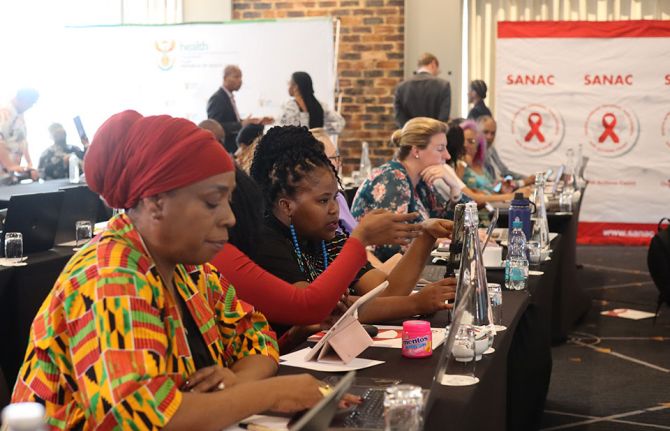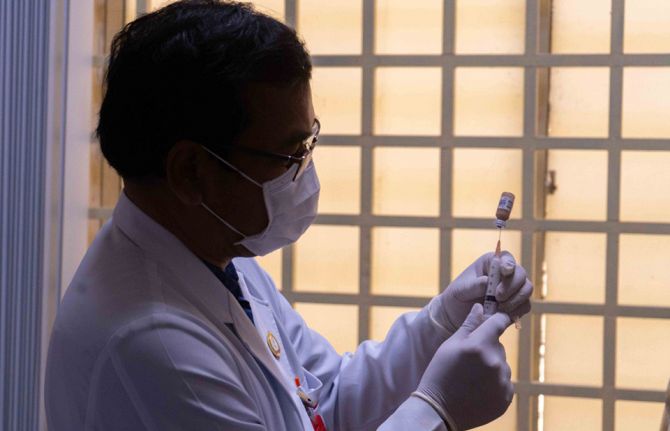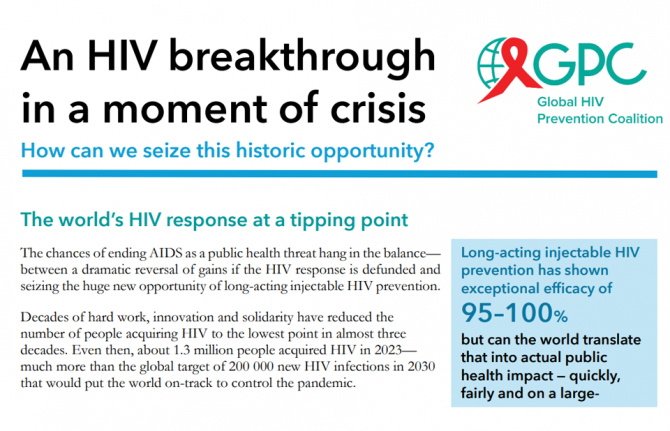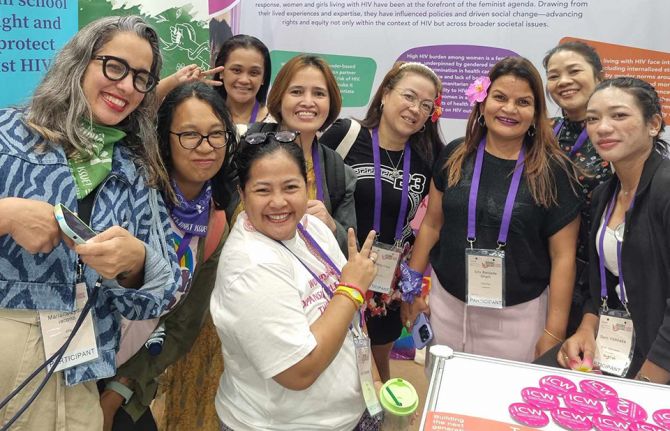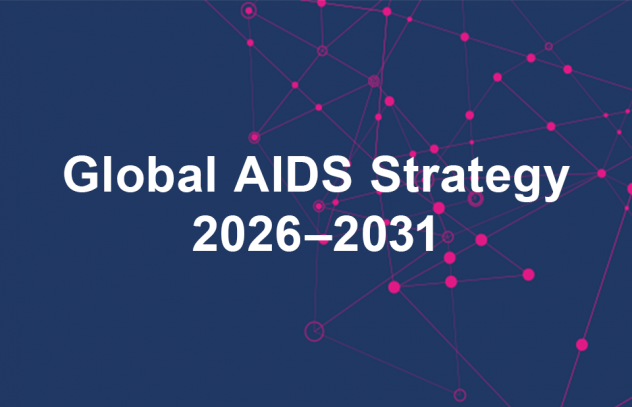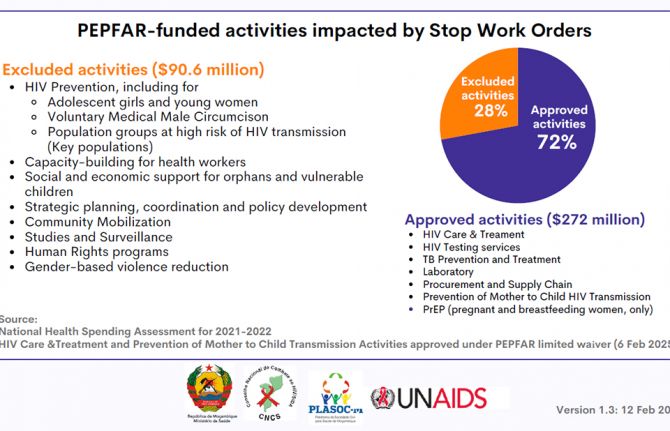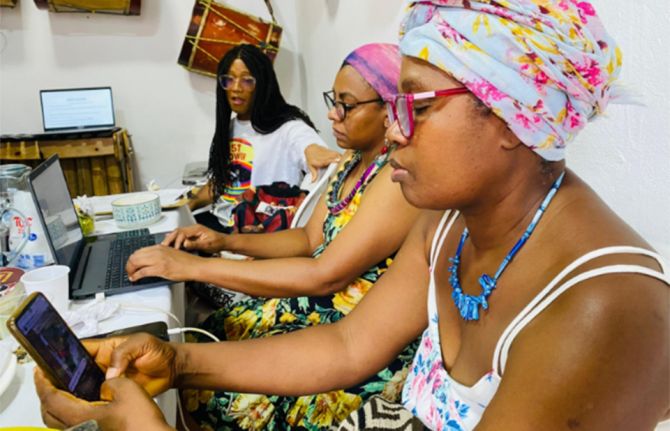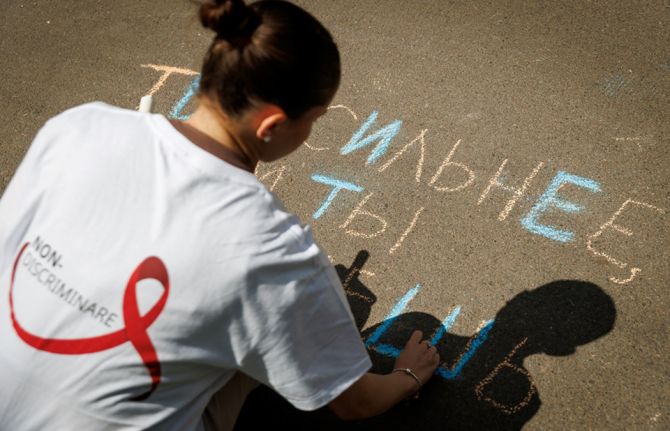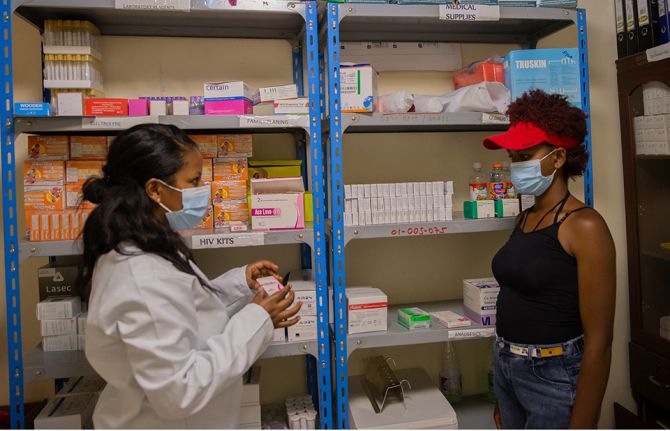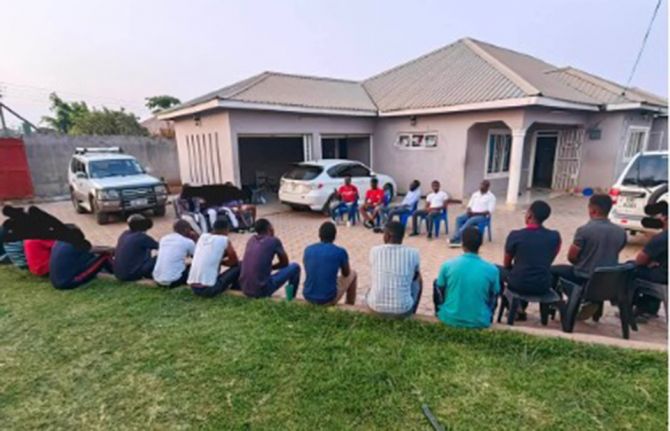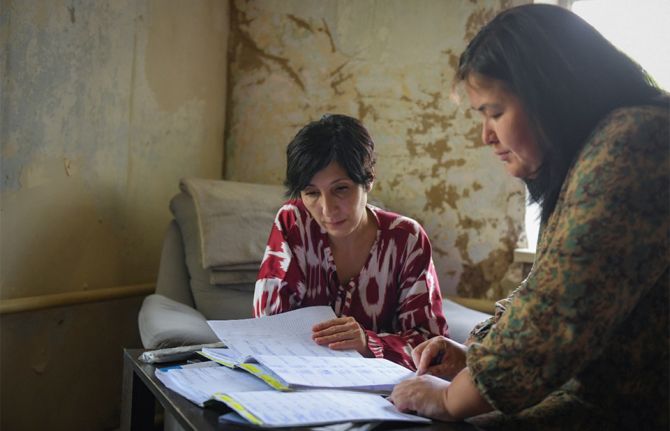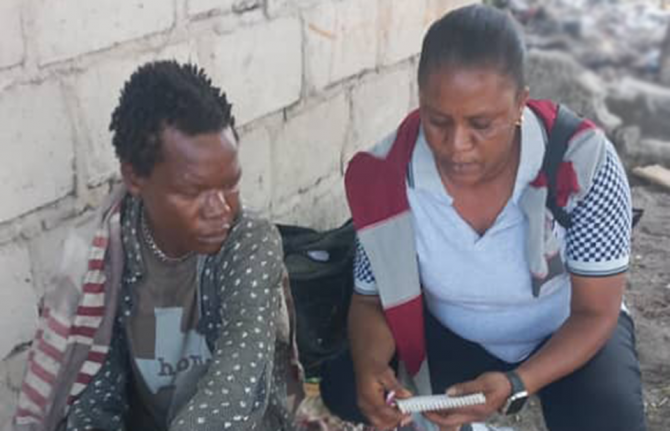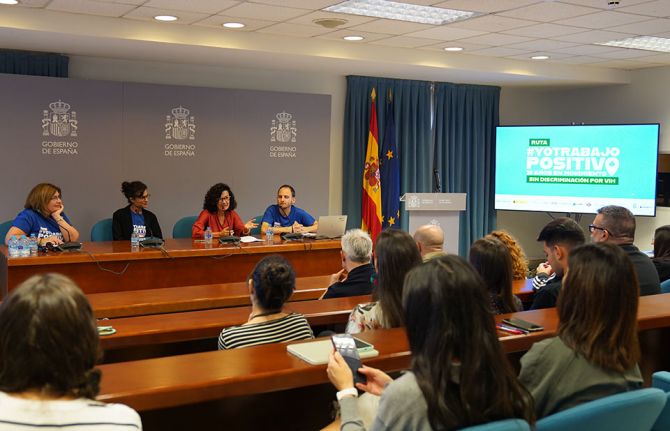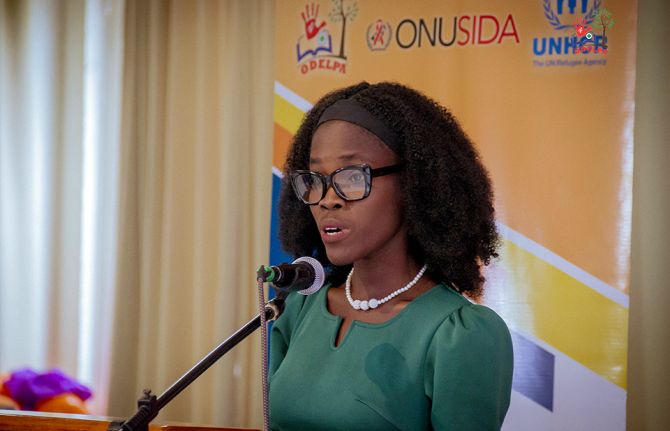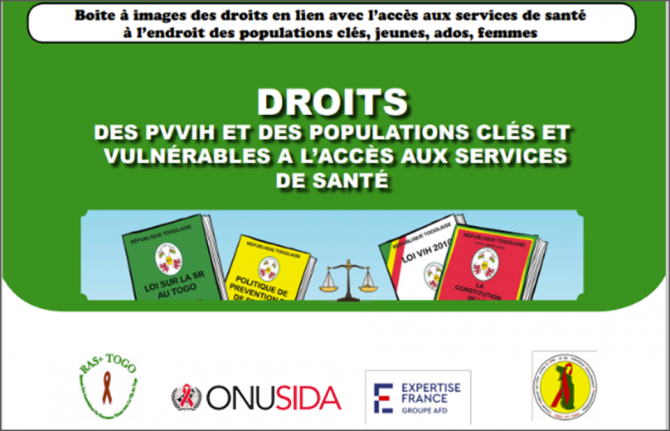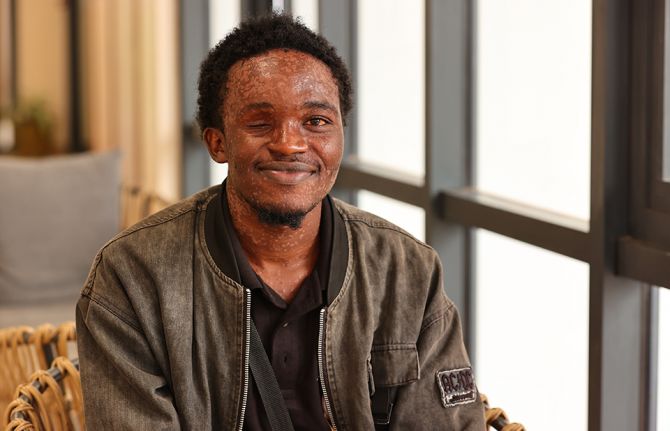
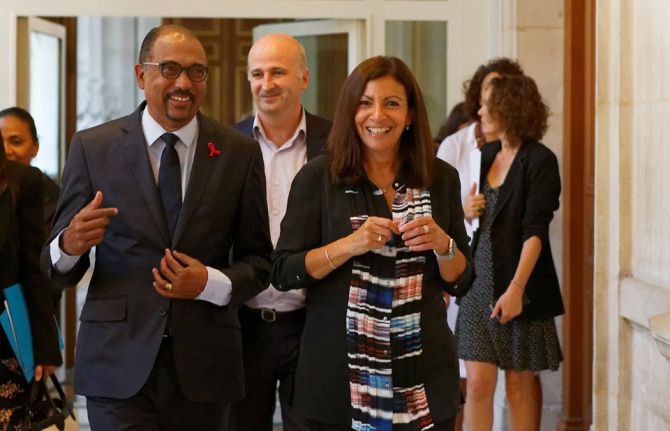
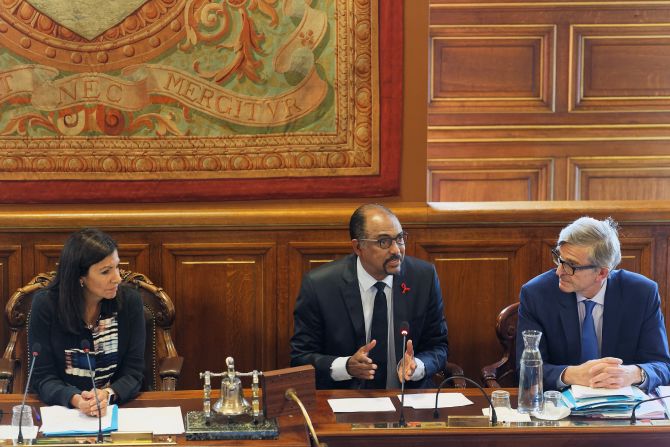
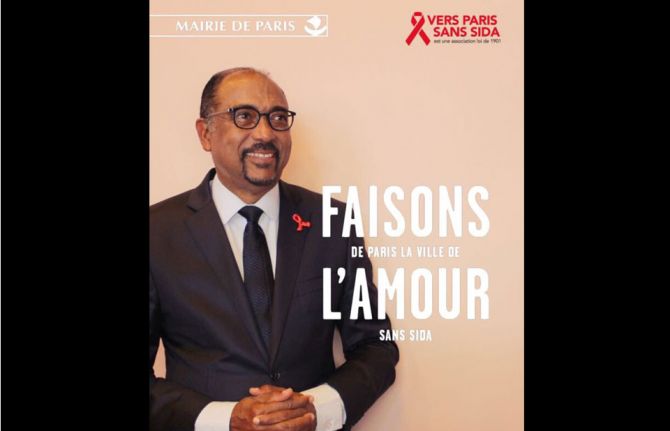
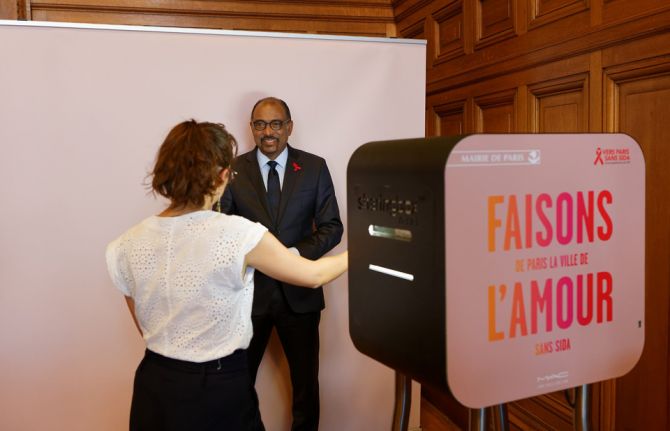
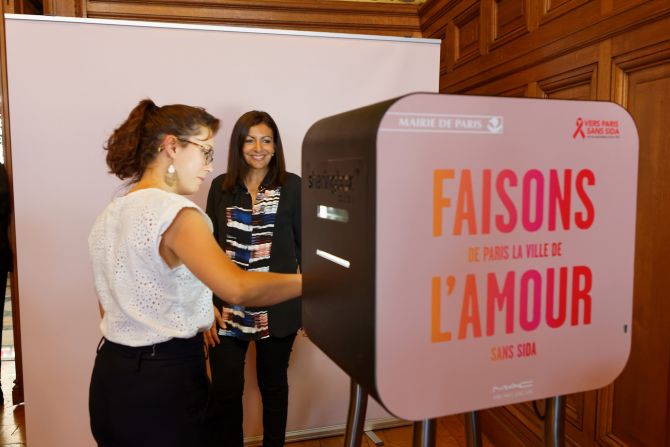
Update
Paris stepping up to end AIDS
04 July 2017
04 July 2017 04 July 2017The Executive Director of UNAIDS, Michel Sidibé, emphasized the importance of cities in ending the AIDS epidemic by 2030 during a speech to the Council of Paris on 4 July, highlighting that cities can use their HIV responses as a transformative force for society.
In his address, Mr Sidibé also spoke of the challenges faced in western and central Africa, where three out of four people living with HIV do not have access to HIV treatment. The African Union has endorsed an emergency catch-up for western and central Africa that sets a target of an additional 1.2 million people on treatment over the next 18 months. The emergency plan places a focus on cities and challenges mayors to take the lead. Mr Sidibé noted that support from Paris can assist western and central African countries to bridge the gaps and reach their goals.
Mr Sidibé finished his address with a call for unity across city borders and country boundaries. “Let us tackle inequalities together. We must not lose focus. Rather, let us continue to fully fund the response in Paris, but also support partners in Africa to tackle inequalities and fragilities.”
Following his address, the Mayor of Paris, Anne Hidalgo, invited Mr Sidibé to join the Let’s Make Paris the City of Love without AIDS! (#FaisonslAmour) campaign. #FaisonslAmour channels the spirit of Paris, uniting Parisians around the target of ending AIDS while raising awareness around the HIV treatment and prevention options available. #FaisonslAmour aims to inform people about the need to know their HIV status and seek treatment early, and to raise awareness about the availability of pre-exposure prophylaxis.
Six Parisians are profiled in the campaign, who reflect the reality of the epidemic within an inclusive city, proud of its diversity. One of the profiles highlights the efficacy of treatment as prevention. The campaign is the first in France to state that a person living with HIV adhering to an effective antiretroviral regime will not pass on the virus. Speaking about the radical campaign, Ms Hidalgo said, “Together, we must mobilize and be vigilant, but, above all, we must act to prevent new infections by delivering just and appropriate messages.”
The #FaisonslAmour campaign is a significant step towards ending AIDS in Paris and demonstrates that Paris is providing leadership in the response to HIV. The campaign is co-chaired by the City of Paris and the Vers Paris sans SIDA association, with the support of the MAC AIDS Fund, and produced by Agence Australie. The posters will be displayed across Paris from 28 June to 25 July.
Region/country

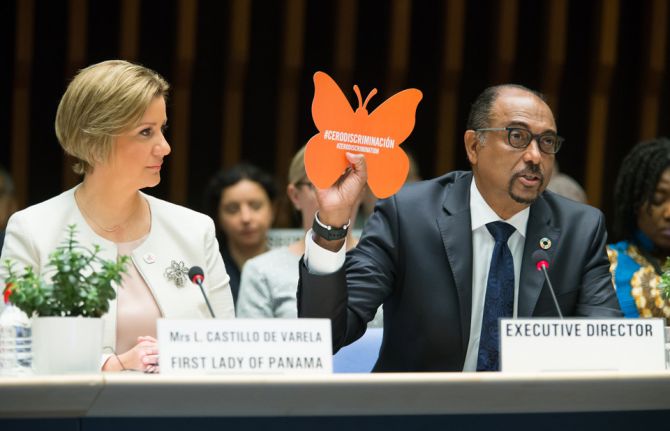
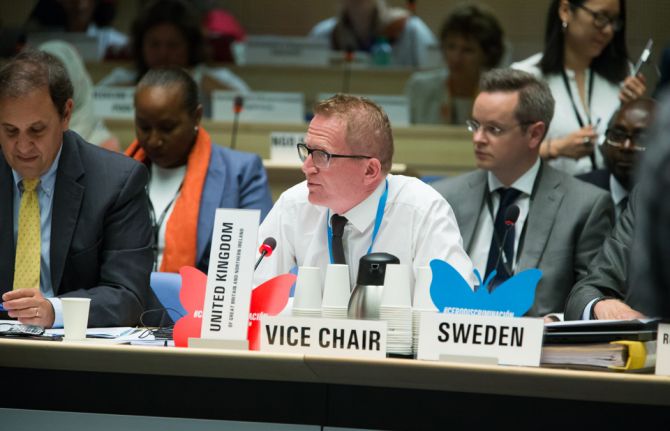
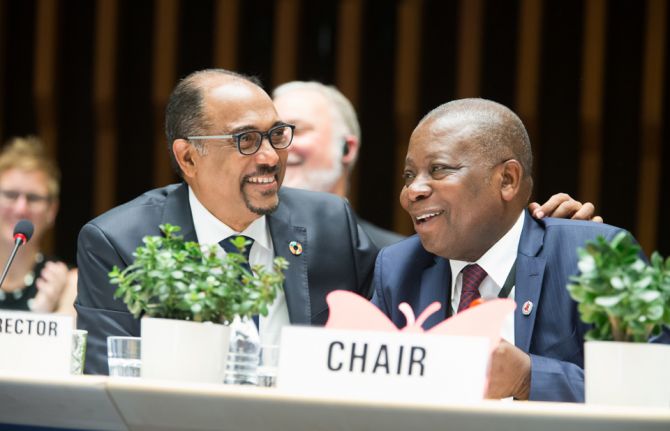
Update
UNAIDS Programme Coordinating Board calls for equal representation of women and men
28 June 2017
28 June 2017 28 June 2017The UNAIDS Programme Coordinating Board (PCB) has called for equal representation of women and men in all PCB delegations, at its latest session, taking place in Geneva, Switzerland, from 27 to 29 June.
Tabled by the United Kingdom of Great Britain and Northern Ireland and seconded by Ghana, a decision point inviting delegations to continue to encourage and support equal representation of women and men in delegations to the PCB was adopted by consensus. The decision point came in response to a report by the UNAIDS Executive Director, Michel Sidibé, in which he highlighted gender equality and the empowerment of women as one of the core pillars of the Fast-Track approach to ending AIDS and a key priority in the repositioning of the Joint Programme.
The PCB members reflected that governing bodies are central to embedding gender equality in organizations and noted that this is an area in which UNAIDS can again demonstrate its commitment to gender equality.
The UNAIDS Executive Director noted how fostering a culture that empowers women within organizations leads to progress in parity. He shared results from the UNAIDS Secretariat Gender Action Plan, including an increase in women in country director positions (from 27% in 2013 to 48% in 2017) and an increase in the percentage of women in middle management and higher levels, from 44% in 2013 to 48% in 2017.
Gender parity on delegations of governing bodies has been strongly advocated by the International Gender Champions. UNAIDS and the Ambassador of the United Kingdom of Great Britain and Northern Ireland Co-Chair the International Gender Champions impact group on change management, which aims to identify and overcome institutional barriers that prevent women’s influence and advancement.
Quotes
“To effectively end AIDS in an inclusive manner that leaves no one behind, we need both women and men to engage meaningfully in decision-making and implementation of the AIDS response at all levels.”
“I am proud to see the UNAIDS Programme Coordinating Board recognize the importance of equal representation of women and men in delegations. The achievement of gender equality at all levels is an integral part of the AIDS response and, as such, a priority for UNAIDS.”

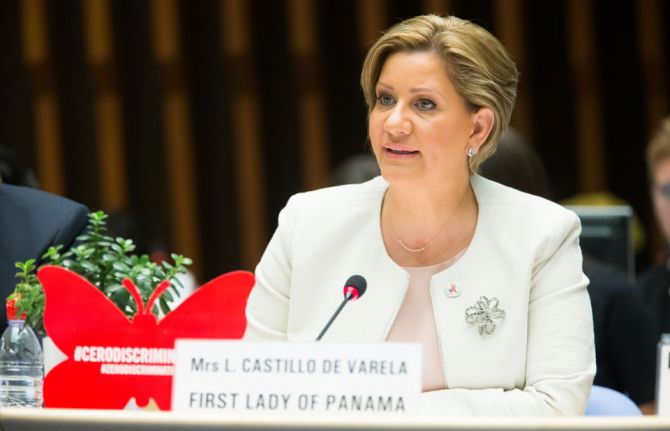
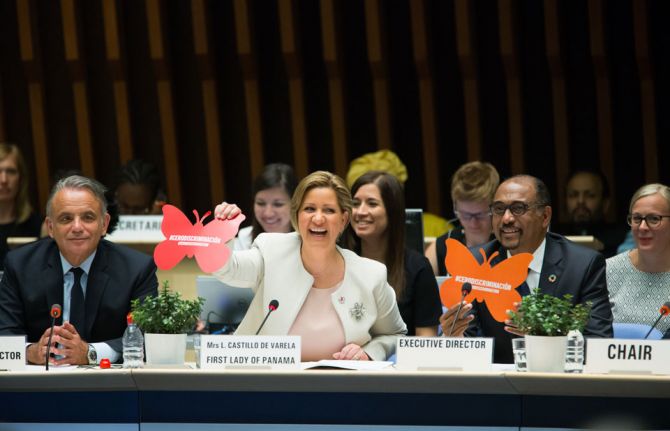


Update
First Lady of Panama champions zero discrimination
27 June 2017
27 June 2017 27 June 2017The First Lady of Panama, Lorena Castillo de Varela, has delivered a passionate speech in favour of the zero discrimination agenda at the opening of the 40th meeting of the UNAIDS Programme Coordinating Board in Geneva, Switzerland.
Ms Castillo, who is the UNAIDS Special Ambassador for AIDS in Latin America, said that everybody must have access to essential health and education services without fear of being harassed, mistreated or rejected. Without an end to discrimination there would be no end to the AIDS epidemic, she said.
“Discrimination is a serious violation of human rights. It is illegal, immoral and inhumane. We all deserve to live with dignity,” said Ms Castillo.
In her speech, the First Lady also underlined the progress made in Panama to expand HIV testing services for young people and key populations, such as gay men and other men who have sex with men, transgender people and sex workers.
Ms Castillo told Board members about the Love on Wheels initiative, which runs mobile clinics offering HIV and breast cancer testing services to hard-to-reach groups of people in rural areas of Panama.
During her speech, she also noted advances in protecting the rights of women and girls in Panama by increasing the country’s marriageable age to 18 years.
The Executive Director of UNAIDS, Michel Sidibé, thanked Ms Castillo for her strong commitment to ending stigma and discrimination, especially for people living with HIV.
“My sister, the First Lady of Panama, is a passionate defender of zero discrimination and is committed to supporting UNAIDS’ work to end the AIDS epidemic. I thank her for her compassion and commitment to leave no one behind.”
Ms Castillo is on a four-day working visit to Geneva, during which she is meeting with staff of UNAIDS, the Office of the United Nations High Commissioner for Human Rights and the International Trade Centre.


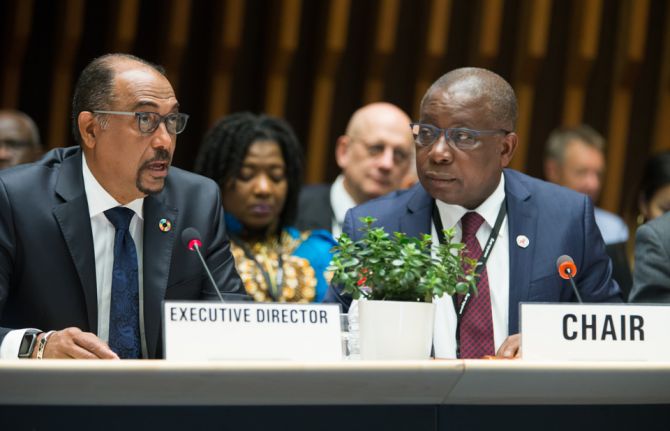
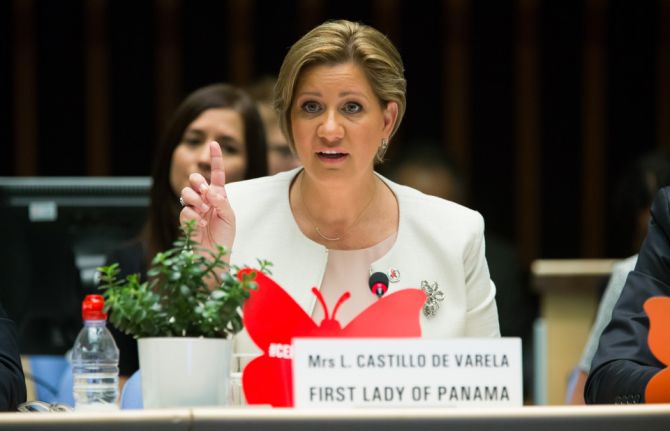
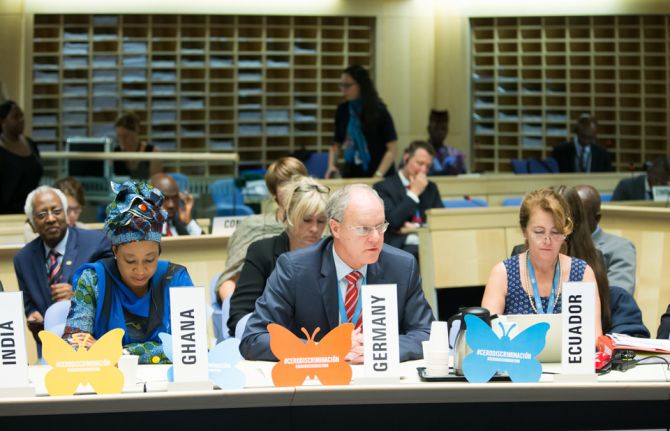
Update
40th meeting of the UNAIDS Programme Coordinating Board opens
27 June 2017
27 June 2017 27 June 2017The 40th meeting of the UNAIDS Programme Coordinating Board is taking place in Geneva, Switzerland, from 27 to 29 June.
During the opening session, UNAIDS Executive Director Michel Sidibé gave an update on the status of the Joint Programme and the changes made in response to the recommendations of the Global Review Panel on the Future of the UNAIDS Joint Programme Model—an independent review requested by the UNAIDS Board during its last meeting.
Mr Sidibé also spoke about the progress made in the AIDS response and outlined the challenges and opportunities that lie ahead in an unpredictable and changing political environment. He stressed the need to address the complex interconnected crises that are fragmenting societies by working across issues, mandates and organizations. He also called for the need to create a movement around the right to HIV prevention, similar to the existing movement for the right to HIV treatment. Mr Sidibé requested the Board to stay vigilant and help to break the conspiracy of complacency, because, as he stressed, AIDS is not yet over.
The Board also heard from the First Lady of Panama, Lorena Castillo de Varela, who was this year’s special guest. As the UNAIDS Special Ambassador for AIDS in Latin America, she emphasized the need to tackle discrimination and exclusion and to put human rights at the centre of the AIDS response in order to leave no one behind.
The thematic segment of the Board meeting will take place on the last day and will focus on HIV prevention. Participants will discuss the current status of primary HIV prevention, share best-practices, identify gaps in programmes and financing and develop strategies to reach people at higher risk.
The 40th meeting of the UNAIDS Board is being chaired by Ghana, with the United Kingdom of Great Britain and Northern Ireland acting as Vice-Chair and Japan as Rapporteur.
Related

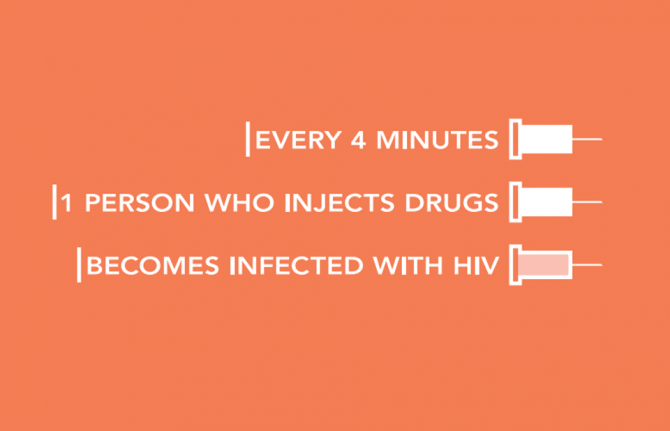
Update
Harm reduction saves lives
26 June 2017
26 June 2017 26 June 2017People who use and inject drugs are among the groups at highest risk of exposure to HIV, but remain marginalized and out of reach of health and social services.
Brochure
More on harm reduction
Related

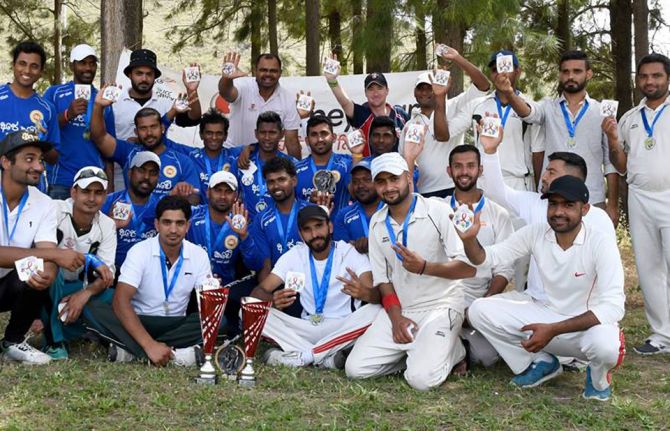
Update
Bowling out AIDS in Cyprus
19 June 2017
19 June 2017 19 June 2017In the finale to the Cyprus 2017 cricket spring season, in May, the Cyprus Cricket Association, in partnership with Cricket without Boundaries and UNAIDS, held a series of events to raise awareness about HIV in Cyprus.
Two hundred schoolchildren from six schools took part in a festival of cricket, at which they played in knock-out competitions and learned about AIDS. Lee Booth, from Cricket without Boundaries, a British nongovernment organization that uses cricket to deliver health and social messages, engaged the children and raised awareness about how they can protect themselves against HIV.
Budding coaches and young people from the local cricket academy also learned about HIV in special events as part of the campaign, which drew upon the World AIDS Day theme, “Hands up for #HIVprevention”.
The final day of events was targeted at adult cricketers, as members of the two finalist teams of the Cyprus Cricket Association #MoneyGram Spring T20 competition learned about HIV prevention and how to stand together against HIV-related discrimination.
In all the events, information on HIV prevention and testing supplied by UNAIDS was made available.
Cricket has a longstanding role in the response to HIV, with THINK WISE, a partnership between the International Cricket Council, UNAIDS and the United Nations Children’s Fund, using the spirit of cricket to support global efforts to end the AIDS epidemic at the Cricket World Cup and beyond.
Quotes
“We are thankful to UNAIDS, Cricket without Boundaries and our long-time sponsors #MoneyGram for supporting the activities. We are pleased that we made it possible for the Cypriot people to gain access to genuine information in the response to HIV.”
“Cricket Without Boundaries is delighted to be working with the Cyprus Cricket Association and UNAIDS to develop cricket in Cyprus and help join the response against HIV in the country. We hope the project will help tackle the stigma surrounding HIV, promote methods to prevent the spread of HIV and raise awareness of the importance of testing and, where relevant, accessing treatment.”
“Cricket is one of the most popular sports in the world and has a real power to inspire young people and share knowledge about HIV. The support of the cricketing world demonstrates how ending the AIDS epidemic is a common goal for people from all walks of life.”
Region/country
Related
 Government ensures continuity of treatment in Malawi
Government ensures continuity of treatment in Malawi

10 February 2025

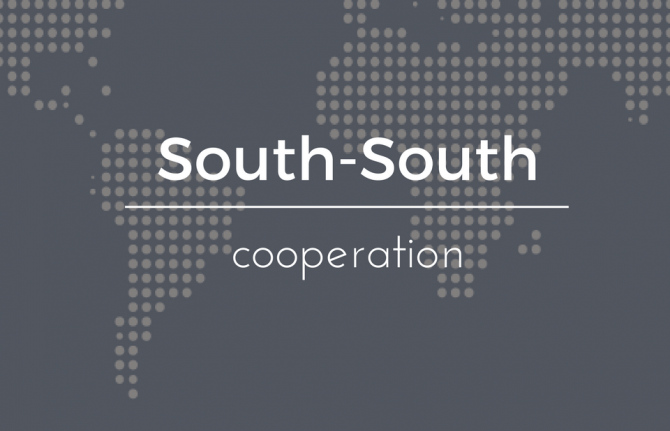
Update
Building bridges: young people living with HIV begin South–South cooperation
16 June 2017
16 June 2017 16 June 2017Young people living with HIV have, with support from UNAIDS and youth leaders, begun an innovative and unprecedented partnership to strengthen South–South collaboration between networks of young people living with HIV in Latin America and the Caribbean and in Africa.
Young people living with HIV in both regions have for a long time organized in national and regional networks to advocate for increased access to HIV services. Now, through a new joint initiative called the 10 Questions Project, they will assess the organizational, advocacy and outreach capacities of networks of young people living with HIV globally, using social media tools, online surveys and in-depth interviews.
Through the initiative, lessons will be learned from each region’s ongoing efforts and from how young people living with HIV in each region participate in the AIDS response. The 10 Questions Project will outline and commit to common advocacy strategies and identify solutions to the challenges faced by young people living with HIV. The assessment will aim to better inform partners and key stakeholders, including donors, on investment choices for strengthening networks and organizations of young people living with HIV.
This joint effort between regions aligns with #uproot, a recently launched youth-led political agenda to end AIDS by 2030, which highlights the need to innovate and reinvigorate partnerships within the youth movement working on HIV, including between youth networks from countries in the global South.
UNAIDS is working to ensure that the world keeps its commitment made in the United Nations Political Declaration on Ending AIDS that 90% of young people have the skills, knowledge and capacity to protect themselves from HIV and have access to sexual and reproductive health services by 2020.
Quotes
"We are taking an important step to break language barriers and frontiers, and build bridges instead of walls”.
“With this collaboration, we are nurturing the wealth of knowledge that we have accumulated through our lived experiences as advocates and young people living with HIV, in the hope to help one another and become stronger and even more resilient together.”
Region/country

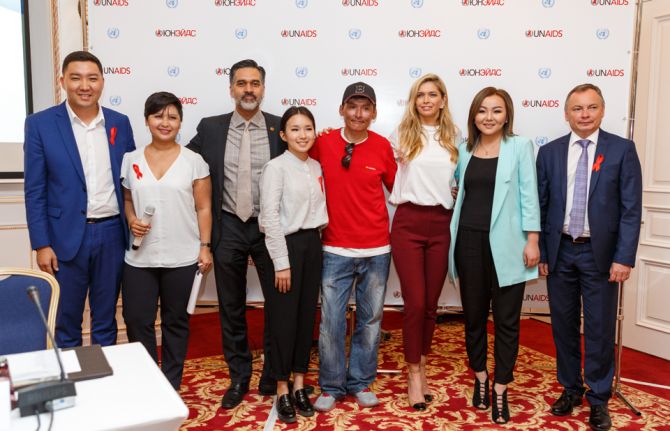
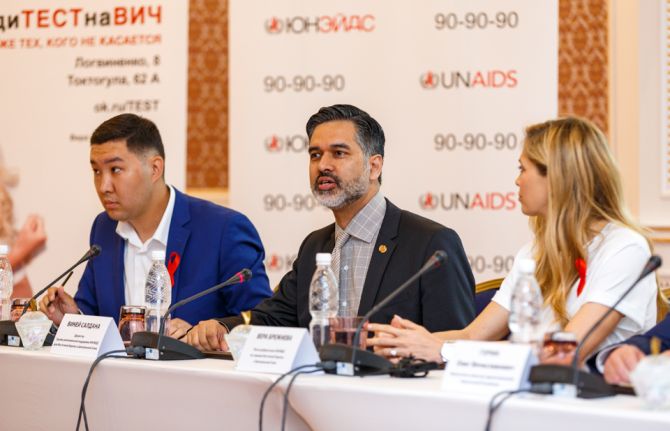
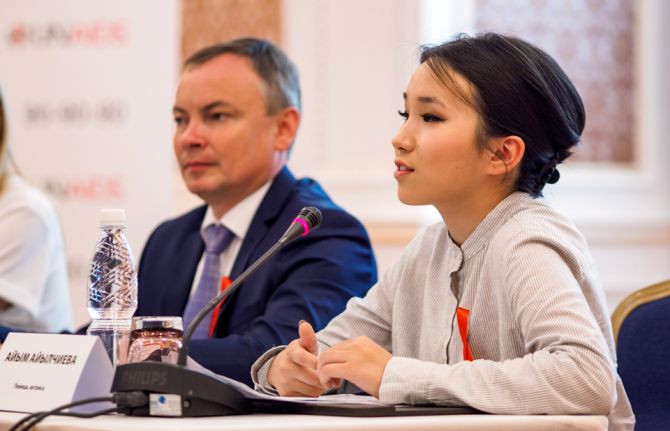


Update
Speaking out against HIV-related discrimination in Kyrgyzstan
15 June 2017
15 June 2017 15 June 2017A campaign to support children and families affected by HIV in Kyrgyzstan was launched in Bishkek, Kyrgyzstan, on 1 June, the International Day for Protection of Children.
A key part of the campaign is responding to the stigma and discrimination often faced by people living with HIV, especially children and families. Despite national HIV awareness programmes in Kyrgyzstan and legislation protecting the rights of people living with HIV in the country, many live in fear, hiding their HIV status even from their relatives.
During the development of the campaign, artists met with teenagers and families who are affected by HIV-related discrimination. The artists, including the UNAIDS Goodwill Ambassador for Eastern Europe and Central Asia, Vera Brezhneva, and popular Kyrgyz singers Abir Kasenov, Arsen, Aiganysh Abdiyeva, Bayastan, Erkin Ryskulbekov and Ayim Aylchieva, voiced the thoughts and words of those children in a moving video, which has been promoted through social media networks and broadcast on national television.
Quotes
“The Ministry of Health can’t respond to the epidemic without the active involvement of everyone. The government and educational institutions do a lot to inform people, but we need celebrities to help us change attitudes towards people affected by HIV.”
“Discrimination not only affects the lives of people. Discrimination creates obstacles for society to effectively respond to the epidemic: people who need services are simply afraid to seek them.”
“UNAIDS welcomes young and well-known Kyrgyz stars, television personalities and journalists who have joined the campaign and are actively promoting issues related to the eradication of stigma and discrimination against people living with HIV.”
Region/country
Related
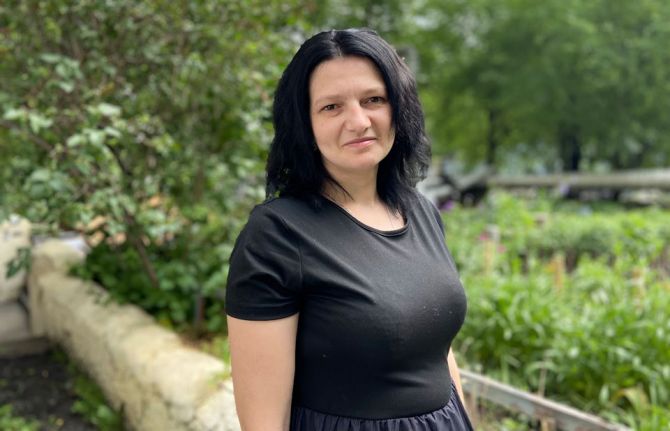 Women, HIV, and war: a triple burden
Women, HIV, and war: a triple burden

12 September 2025
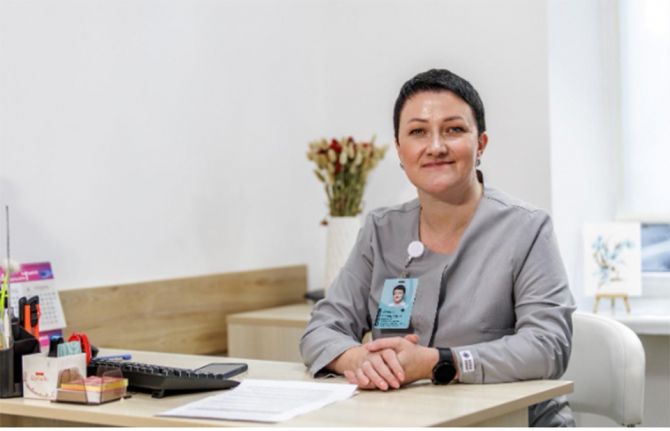 Displacement and HIV: doubly vulnerable in Ukraine
Displacement and HIV: doubly vulnerable in Ukraine

11 August 2025

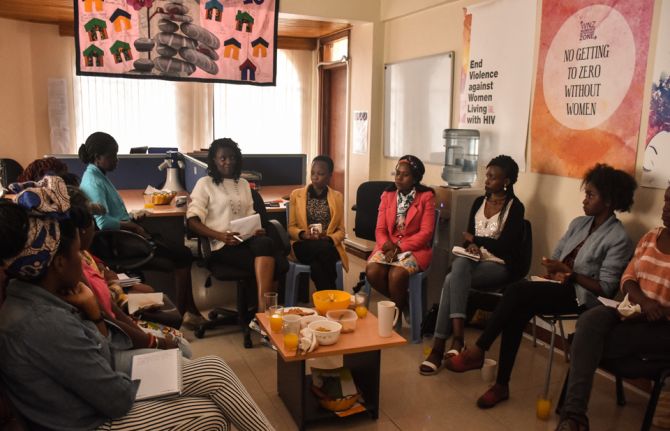
Update
Florence Anam’s mission: giving young people a reason to live
13 June 2017
13 June 2017 13 June 2017GRASSROOT HERO SERIES
UNAIDS brings you stories of people on the ground bringing about change in the AIDS response. We thank them for being unsung heroes. AIDS is not over, but it can be.
A gaggle of girls shuffle into Florence Anam’s office for their monthly mentoring chat. She has put out snacks and assembled chairs in a circle. To get the conversation started, she asks the 16 girls to describe their happiest memory and their saddest moment and what their actions were at both of those times. A few describe their carefree childhoods and their world crumbling when they found out they were living with HIV.
Ms Anam, who works for the International Community of Women Living with HIV in Kenya, sees a pattern after about five responses and asks, “Who has felt so low that they wondered if they could carry on?”
Fifteen of the 16 girls raise their hands.
“I am so disturbed to see how young people are so depressed and how this will affect them in their adulthood,” she says. “We need to give our kids a reason for living.”
Her determination is deeply rooted.
Eighteen years ago, at the age of 19, Ms Anam became pregnant. As a teenager she had been flattered by an older man showering her with attention. A good student in school and just about to start university, her parents told her that they were disappointed in her, but never brought up the subject again.
“When I was pregnant, there were never any questions of how I got in this situation or who was responsible,” Ms Anam said. “Sex was a taboo topic and not a discussion that parents had with their children.”
Her mother took her to a clinic, and she describes being stared at. At the time, she thought the doctor was probably wondering how such a young woman could be pregnant, but she now thinks they were hiding things from her.
“The health system, I believe, was not equipped to deal with young people like me at the time. I remember the staff talked to my mother more than me,” Ms Anam says.
Ms Anam thinks the doctors informed her mother that she was HIV-positive, although they didn’t tell Ms Anam that she was. She recalls her mother telling her to stop breastfeeding her baby son, although the teenage girl just thought it was because she had to go back to school, which she did seven days after delivering her baby.
In 2006, during a national Kenyan HIV prevention campaign, she and four other friends went to get tested. “I wanted to prove people wrong and wanted to just come out of that testing centre and scream I was HIV-free,” she says. When the HIV tests confirmed she was living with HIV, she was shocked.
Ms Anam says the real impact of her HIV-positive status came a year later, when she needed to get an HIV test to qualify for health insurance at a new job. The day the results came back, she had a termination letter on her desk.
“It hit me that I would not achieve my dreams, I felt really sad that all the dreams my parents had for me could not come to pass because I was not going to be able to work,” Ms Anam says. “I sank into a hole.”
She stopped socializing, distanced herself from her family and felt utterly lost and angry.
“Back then, there were no HIV networks for young people, neither was there as much information available, so I contacted a woman who had been featured in a newspaper and lashed out at her, asking, “Why am I not allowed to be productive if I am not sick yet?”” explains Ms Anam.
The woman, Asunta Wagura, happened to be the Director of the Nairobi-based Kenya Network of Women with AIDS. Ms Wagura asked her to come in and see the organization, for which Ms Anam then started volunteering. She describes the experience as a serious reality check. She heard other women’s stories, of how many of them lived in poverty and dealt with violence.
“It was like plunging into this world that as a protected child I never even knew existed; all of a sudden my problems became trivial and I knew I needed to let other people know what I was seeing every day.”
She also became more vocal about HIV, bringing a lot of attention to herself and her status.
“I was done with having people dictate to me what their opinions about my life were, I missed the girl that I was and I desperately needed to get out that hole,” she says.
Over time, she learned to take control of her life.
“Part of my family was supportive, but another looked down upon my decision,” Ms Anam explains. “When my sister said to me that I had found a purpose, I did my first media interview.”
And she never looked back.
The turning point for Ms Anam came when she realized that she too had a story to tell and so she started writing. It was not only therapeutic—it inspired others.
She accompanied Ms Wagura and spoke to her peers.
It is that mentorship that Ms Anam says enabled her to grow to be the person she is today.
She started a support group of young people in 2008 and the members continue to be a part of her life.
Ms Anam worked in the private sector in an HIV workplace programme, where she implemented strategies for HIV prevention and expanding health services. “These were the best years, because I was able to go back to the system that had shown me what stigma could lead to and I helped fix things.”
She then joined the Kenya Empowerment Network of People Living with HIV to coordinate a national advocacy and communication portfolio. Now working in advocacy and communications for the International Community of Women Living with HIV, she considers that she lives a full life and is bringing up her 17-year-old son and 11-year-old adopted daughter. They chide her for bringing up sex and other “awkward” subjects at the dinner table.
“I am like the weird mother speaking about sex and responsible sexual behaviour in the most insane places,” Ms Anam says. “I keep repeating to them that decisions you make now, however immature, will have a long-term impact.”
“I want to raise their consciousness regarding their life 20 years down the road,” Ms Anam says. She tells young people that she is one of the lucky ones, because she bounced back.
She also believes that families and communities need to better address the needs of 19–24-year-olds and encourage an open dialogue and mentorship.
Ms Anam thinks that parents believe that once their children get to 18 they are okay and do not need any guidance and support, yet many mistakes are made after that age. Ms Anam explains that young people need to love themselves and appreciate that, whatever experiences they go through, it’s a lesson for life.
Helping others gives her a purpose. In addition, she adds, “I want to stop one more person going through what I went through, and if they have gone through the same thing, then I want to help them get their life back on track.”
Related

Update
The great work I saw in South Africa—A travel log by UNAIDS Goodwill Ambassador Kenneth Cole
14 June 2017
14 June 2017 14 June 2017Monday, 6 March 2017
Arriving in Durban
I’ve just arrived in Durban, South Africa, on my first official mission as a UNAIDS Goodwill Ambassador to find out more about UNAIDS’ work. Last year at the High-Level Meeting on Ending AIDS, UNAIDS inspired a global commitment to end AIDS, and I am here to find out what we need to do to achieve this ambitious goal. I’m looking forward to talking to people living with HIV, their families and friends, and to health workers, politicians, scientists and students, to see what challenges we need to overcome.
Tuesday, 7 March
Phoenix township
An early start to get to our first stop, Phoenix, a township just outside Durban, and a visit to the Operation Sukuma Sakhe war room (sukuma sakhe is Zulu for rise up and build).
Despite the early hour, the war room, a prefabricated hut at the back of the local clinic, is baking hot and packed with community workers. The newly elected ward councillor introduce the stark challenges he and his community face—high unemployment, poverty, alcohol and substance abuse, inadequate housing and sanitation, gender-based violence and crime—all factors that contribute to high rates of HIV and tuberculosis (TB).
Community caregivers profile the needs of every household, checking their health, education and financial and nutritional status. Back at the war room the reports are used to direct government services to where they are most needed. The community caregivers offer tests for HIV, TB, malnutrition and diabetes, carry out health education and awareness, check school attendance, deliver medicines and find people who have stopped taking treatment or missed appointments.
From the war room, we drive a short distance then set out on foot into the heart of the community. Less than a minute from the main road, the breeze-block houses give way to wooden shacks and makeshift tents made from old advertising hoardings. We walk single file down a narrow path, stepping gingerly over streams, to get to the homestead of Gogo Ntuli (Gogo means grandmother in Zulu). Gogo is more than 80 years old and her state pension supports her daughter, grandchildren and great-grandchildren—four generations living under the same roof. Gogo fed and looked after the councillor as a child, along with other children whose parents were working or who had been orphaned. She inspired him to become a politician and mobilize his community to rise up and build, to come together to overcome the many challenges they face.
I am so impressed by the councillor, war room committee members and community caregivers and how they work together to try and resolve the incredibly complex social issues that drive HIV and TB, which affect so many of the community.
Student conversations, Durban University of Technology
Young people in South Africa, especially young women, are at higher risk of HIV, so I was excited about the opportunity I had to chat with students in the Departments of Fashion, Textiles and Business at Durban University of Technology. We talked about the myths and truths around HIV and why championing the AIDS response has been an integral part of my career.
Working in the fashion industry since the beginning of the epidemic, AIDS became personal very quickly, with many of my friends and colleagues affected by HIV. I wanted to use my voice to speak out against HIV stigma and to urge investment in AIDS research. I wanted people to think about not what was on their bodies, but what was in their minds.
The students’ line of questioning was interesting and often unexpected. HIV is a real concern and even in tertiary education they asked basic questions about HIV, its treatment and prevention. They are clearly concerned about the impact that AIDS has on their lives and are struggling to balance their own personal goals, while living in an era where AIDS is not yet over. I realize there is still so much to be done.
Wednesday, 8 March
Responding to tuberculosis at King Dinuzulu Hospital
King Dinuzulu Hospital is a specialist centre for diagnosing and treating drug-resistant TB. Globally, TB is the leading cause of illness and death among people living with HIV, despite being preventable and mostly curable. South Africa has the highest burden of HIV-associated TB in the world and a rapidly growing epidemic of drug-resistant TB.
Most worrying is the epidemic of extensively drug-resistant TB (XDR-TB). This is TB that is resistant to most first- and second-line TB medicines. It can take up to two years of hospital treatment with painful daily injections and the risk of serious side-effects, such as deafness and kidney failure. Until recently, only about one in four patients with XDR-TB were cured. Two new medicines have been approved for TB treatment, the first in more than 50 years, which bring hope to the many thousands of South Africans developing drug-resistant TB every year, the majority of whom are also living with HIV.
Speaking through stifling but essential TB protection masks to the staff and people on treatment, I was stunned by the isolation and stigmatization that people with drug-resistant TB face. One woman, clearly still distressed by the experience, described how they came to her home wearing gloves and masks to inform her of her diagnosis and bring her to the hospital. She was also lucky, she said, as her family were supportive and she was among the first to get access to the new TB medicines. She was hoping to go home as soon as her TB became noninfectious.
Young children are particularly vulnerable to TB and the most severe form, TB meningitis. However, the hospital specializes in treating childhood TB and even has a dedicated school to make sure they don’t miss out on education during their long treatment.
We have worked so hard to keep people with HIV alive, only for them to die of TB. I’m astonished that there is so little investment in TB research when it continues to affect millions every year. It is clear that we cannot end AIDS until we can control TB.
Reflecting on stigma in Gugu Dlamini Park
At noon, we visit Gugu Dlamini Park in downtown Durban. A massive red ribbon dominates the landscape as a constant reminder of the dangers of HIV-related stigma. The ribbon is a monument to Gugu Dlamini, one of the first South Africans to publicly disclose her HIV status, in December 1998. Shortly afterwards she was stoned to death for bringing disgrace to her community. Her tragic death inspired the Treatment Action Campaign’s famous HIV Positive t-shirts, and signalled the start of a change in attitudes to people living with HIV. We have come a long way since then, but people living with HIV or TB still face stigma in their daily lives, and we need to continue to work to break down barriers based on fear and ignorance.
Science and lunch at the Centre for the AIDS Programme of Research in South Africa
The Centre for the AIDS Programme of Research in South Africa (CAPRISA), University of KwaZulu-Natal, was created in 2001 by the formidable team of Professors Salim and Quarraisha Abdool Karim, two of the world’s leading HIV scientists. CAPRISA, a UNAIDS collaborating centre, focuses on better understanding HIV infection and prevention.
An estimated 2000 young women aged 15–24 become infected with HIV in South Africa every week. Quarraisha presents the cutting-edge research being led by her amazing team, who are passionate about developing HIV prevention technologies that work for adolescent girls and young women. She stresses that one of the main challenges is that we are failing to reach men with HIV testing and treatment services. Getting men living with HIV onto effective HIV treatment would greatly reduce the risk of onward transmission of HIV.
A night visit to the TB/HIV Care Association
As the sun sets, we head to the TB/HIV Care Association to meet another formidable team, the peer educators and staff of their sex-worker outreach project. We are welcomed with rousing songs, but the words of these songs are far from traditional. One song promotes condoms for safer sex and another, That’s Why I’m a Sex Worker, expresses solidarity with the sex workers they work with every day.
The staff and peer educators work in shifts from mobile clinics through the night to visit sex-workers on the streets or in brothels. Most of the peers are sex workers themselves. They offer safe, confidential and nonjudgemental HIV prevention and treatment services to their peers as well as advice on how to deal with violence and access legal services. Sex workers often face police harassment, discrimination by health-care workers and high rates of HIV.
What is truly incredible is the trust that they have built with the sex-worker community, their clients and the brothel owners. This trusting relationship enables us to accompany them on their routine visits to brothels to demonstrate proper condom use, distribute condoms and offer HIV testing. During our visit the peer educators explain the different reasons they chose sex work—some to escape violence, neglect and abusive relationships, others to raise enough money to give their families a good start in life.
The work and dedication of the TB/HIV care team and their passion for change is amazing and something I will never forget.
Thursday, 9 March
Revisiting Mothers to Mothers
This is my second visit to Mothers to Mothers (M2M), a programme that encourages pregnant women to test for HIV and, if HIV-positive, get onto treatment. It can be an overwhelming experience. The M2M mentor mothers, who are living with HIV, have been trained by M2M. They provide support and advice to pregnant women living with HIV to make sure that their babies remain HIV-negative throughout pregnancy and breastfeeding and that they themselves remain healthy and well.
In 2004, during my first visit, tens of thousands of babies were being born with HIV; many did not see their first birthday and many of those that did survive were orphaned. It is amazing, 12 years later, to see such transformation. New HIV infections among children 0–14 years old have dropped dramatically, from 32 000 in 2009 to 5100 in 2015 in South Africa—a strong sign that the country is well on its way to eliminating mother-to-child transmission of HIV.
Visiting one young mother brings home to me the challenges of being unemployed and raising a child alone. It shows the importance of the support that M2M provides. Their stories give me incredible hope that we can look forward to an AIDS-free generation soon.
Final reflections
It’s time to leave South Africa after a rollercoaster three days.
This trip has given me a better understanding of the forces that stand in the way of ending AIDS. Continued stigma and discrimination, poverty and marginalization, rising resistance to medicines, people being left behind by inadequate health, education and social services, to name but a few.
More importantly, however, it reaffirmed what works—the power of community, collaboration, inclusion and innovation. We have effective tools to prevent, diagnose and treat TB and HIV, but we need to get them to everyone who needs them. At the same time, we need continued investment in research for better medicines, diagnostics and vaccines that meet everyone’s needs.
There are more than 3.4 million people on HIV treatment in South Africa. They say that if South Africa can succeed in changing the trajectory of AIDS, then the world can too. While there are clearly real challenges to overcome, the great work I saw and experienced in South Africa astounded me and will inspire my contribution to ending the AIDS epidemic and my work as a Goodwill Ambassador for UNAIDS.

